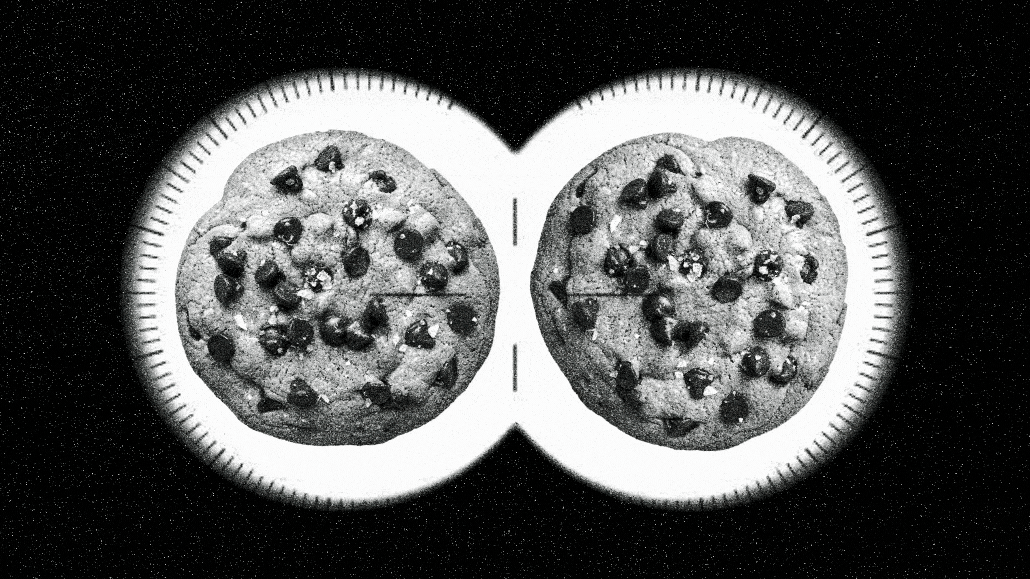Save 50% on a 3-month Digiday+ membership. Ends Dec 5.
Inside Google’s latest move to postpone the cookie apocalypse

Google has stayed true to form: It has put the brakes on its elaborate plan to ditch third-party cookies in its browser, just as many anticipated. For now, Google hasn’t given an exact timeline — just that it’s hopeful it can happen in 2025.
Before diving into the implications and potential outcomes, it’s crucial to understand the events and factors that have brought the ad industry to this point. Despite Google’s (most recent) assurances that it would stick to its (newest) game plan, there has been a lot going on as of late.
January is as good a place to start as any. That’s when Google began ending third-party cookies in Chrome among one percent of traffic, which equates to around 30 billion users.
The move gave ad executives something to test. They could actually see how various alternatives to third-party cookies, including Google’s own, might work once those cookies were gone completely. Some parts of the industry jumped at the chance, while others tiptoed around it. Most watched from afar. They believed they still had time to figure things out, so there was no reason to rush into it, especially when there was so much uncertainty around Google’s timeline.
In many ways, these marketers have a point. Rushing could disrupt their existing advertising plans while they figure things out and build sustainable data strategies. But on the flip side, it’s probably foolhardy for them to watch from the sidelines as Google kicks the proverbial can down the road.
Eventually, Google will run out of road and actually get rid of cookies — or at least for more than one percent of traffic, following suit of other browsers including Safari and Firefox that phased them out several years ago. When Google actually follows through, it’s going to create a lot more problems for ad executives. With fewer cookies available, their advertising in Chrome becomes less stable.
This schism has provided the backdrop to what has been an awkward start to life after third-party cookies — well, some of them. It’s been a period that hasn’t thrown up many key learnings for marketers. If anything it’s confirmed what they already knew four years ago when Google first announced the plan: namely, that getting rid of third-party cookies in Chrome and developing alternatives to them is fraught with ethical concerns, technical limitations and a fragmentation of identity.
Ad position: web_incontent_pos1
The reaction to Google’s Privacy Sandbox mirrors this uncertainty, with progress appearing slow and cumbersome. While there’s enough traffic to test Google’s cookie alternatives, it’s limited to certain areas like behavioral advertising, remarketing and measurement. However, testing these solutions can be challenging without assistance, and there are concerns about Google gaining more control over ad dollars through the Sandbox.
Even ad tech vendors are treading cautiously, mainly because they’ve got their own suspicions about Google’s endgame. They’re fretting over the possibility that by jumping on board with these plans, they might inadvertently become Chrome’s lackeys instead of competitors.
Given these issues, criticisms from the Competition and Markets Authority (CMA), the Information Commissioner’s Office and the IAB seem justified. The latest delay arguably is a formality. The fact that there was ever any debate over it seems imprudent, especially given Google’s insistence that it wouldn’t clip third-party cookies from the rest of the traffic in Chrome during the fourth quarter.
For this to happen, it would need to switch off third-party cookies in Chrome by September. However, this was always going to be challenging, as the regulatory body overseeing the process (the CMA) intended to make a decision over the summer. Even if the plan were approved, there would still need to be a “standstill period” of 60 to 120 days to ensure everything was in order before Google could deactivate them. This leaves a very narrow timeframe for Google to complete the transition before the fourth quarter.
Based on this, a revised 2025 deadline seems more realistic, though it goes without saying that it might not be the last revision.
Ad position: web_incontent_pos2
In theory, the extension should be a good thing; it technically gives the ad industry more time to prepare for something that’s going to be highly disruptive to the way ad dollars are traded. And yet, history suggests it will be anything but a productive period. True, previous deadlines happened prior to Google removing third-party cookies from one percent of traffic in Chrome, but if marketers wanted to, they could’ve still tested alternatives on the cookie-less traffic in Safari and Firefox to get a steer on how things might shake out in Chrome. Unfortunately, this didn’t happen, and it’s unlikely to occur until there’s enough cookie-less traffic in Chrome to compel marketers to explore alternatives.
All of this drama is unfolding while Google faces an antitrust trial in the U.S. starting this September. The outcome could be a game-changer for the fate of third-party cookies in Chrome.
More in Marketing

Ulta, Best Buy and Adidas dominate AI holiday shopping mentions
The brands that are seeing the biggest boost from this shift in consumer behavior are some of the biggest retailers.

U.K. retailer Boots leads brand efforts to invest in ad creative’s data layer
For media dollars to make an impact, brands need ad creative that actually hits. More CMOs are investing in pre- and post-flight measurement.

‘AI is permeating everything we do’: How Guitar Center developed 2 AI tools this year
This summer, the company launched a chatbot called Rig Advisor to help customers find the right instruments and products.
Ad position: web_bfu





